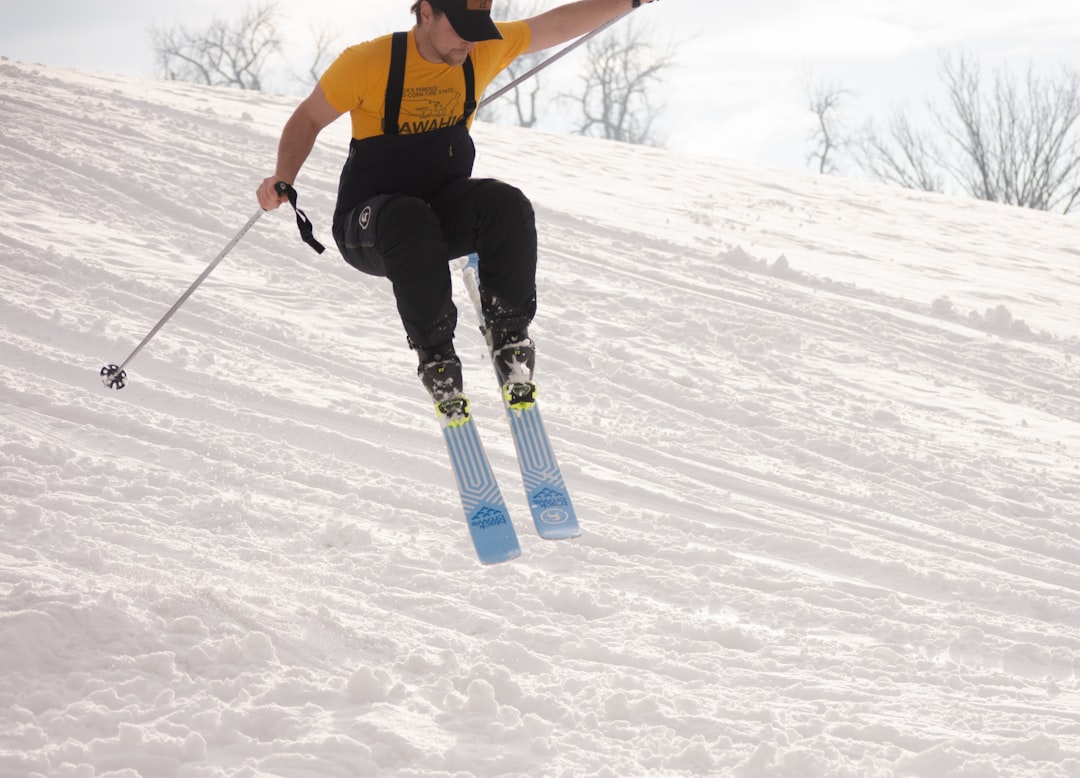Winter Sports Travel Insurance: Safe & Secure 2025
Why Winter Sports Adventures Need Specialized Insurance Coverage
Winter sports travel insurance is specialized coverage protecting you from the unique risks of skiing, snowboarding, and other snow activities. Unlike standard policies, it covers mountain rescue, on-slope medical treatment, equipment loss, and trip disruptions like piste closures.
Key coverage includes:
- Emergency medical expenses – Up to £10 million for injuries, including helicopter rescue.
- Equipment protection – Cover for lost, stolen, or damaged gear.
- Trip disruption – Reimbursement for piste closures or lost lift passes.
- Repatriation – Medically necessary transport back home.
Why you need it: Medical costs in ski destinations can be staggering. A broken wrist in Canada can cost over £10,000. Standard travel insurance often excludes winter sports, leaving you exposed to massive bills. One fall can turn a holiday into a financial disaster without proper protection.
With the right winter sports travel insurance, you can focus on the adventure, not the “what ifs.” Whether you’re a beginner or an expert, this coverage provides a crucial safety net.
I’m Ramy Saber, founder of GoTravelHunt. I’ve spent years researching travel protection, and I’ll guide you through everything you need to know to stay safe on the slopes.

Know your winter sports travel insurance terms:
Why Standard Travel Insurance Isn’t Enough for the Slopes
Many travelers assume their standard travel insurance covers ski trips, but this is a costly mistake. Standard policies are designed for low-risk holidays and typically exclude “adventure sports” like skiing and snowboarding.
The risks on a mountain are higher, potential injuries more severe, and medical costs can be astronomical. A broken leg on a slope involves different logistics and expenses than a simple fall in a hotel. Without specialized winter sports travel insurance, you could face financially devastating medical bills. For more insight into protecting your health abroad, check out trip medical insurance.
What is specialized winter sports travel insurance?
This is either an add-on to a standard policy or a standalone plan designed for snow-based activities. It fills the gaps left by basic insurance, offering higher medical expense limits, specific protection for ski/snowboard equipment, and coverage for winter-specific issues like piste closures or avalanche disruptions.
What activities are typically covered?
Most policies cover a wide range of recreational activities. Always check your specific policy, but coverage generally includes:
- On-piste skiing and snowboarding
- Cross-country skiing
- Sledging and tobogganing
- Ice skating
- Snowshoeing
- Snowmobiling and dog sledging (often with a guide)
For more adventurous travelers, many policies cover freestyle skiing/snowboarding in designated parks. Some even offer upgrades for heli-skiing or cat skiing. Coverage is for recreational purposes only; professional competitions require different insurance. To understand exactly which activities need additional coverage, learn which sports & activities need extra coverage.
Common exclusions and limitations
Understanding what isn’t covered is just as important. Common exclusions include:
- Professional competitions and racing: These require specialist coverage.
- Skiing out-of-bounds or in closed areas: Venturing into areas marked as off-limits will void your policy for any related incidents. These restrictions are for your safety.
- Off-piste skiing: Coverage varies. Some policies include it if you’re with a guide, while others exclude it entirely. Read the fine print carefully.
- Equipment damage during use: Hitting a rock and snapping a ski is often not covered, unlike theft or damage in transit.
- Piste closure due to lack of snow: Some policies compensate for a complete resort closure, but not for poor snow conditions or “loss of enjoyment.”
- Undeclared pre-existing medical conditions: You must declare all relevant health conditions when buying your policy, or any related claim will be denied.
Always read your policy documents thoroughly to understand your coverage before you travel.
The Core Benefits: What Your Policy Protects
Winter sports travel insurance is a financial safety net for when things go wrong on the mountain. It provides comprehensive protection covering medical emergencies, equipment issues, and trip disruptions.
Emergency Medical and Repatriation
This is where your policy proves its worth. Medical emergencies on the slopes are frighteningly expensive. A fall could lead to a helicopter rescue, emergency surgery, and a lengthy hospital stay.
- In Canada, a broken wrist can cost over £16,000. In the USA, bills can exceed $202,000. Without insurance, you are personally liable for these costs.
- Your policy covers mountain rescue (including helicopter evacuation), hospital bills, emergency surgery, and even emergency dental treatment. Most policies offer up to £10 million in medical cover.
- Repatriation is also critical. If you’re too injured to fly home commercially, medical repatriation can cost £25,000 to £50,000. Your policy covers this, ensuring you get home safely without facing bankruptcy.
Medical costs are especially high in the USA and Canada. Even in Europe, an EHIC/GHIC card won’t cover everything, particularly private clinics or mountain rescue.
Ski and Snowboard Equipment
Your gear is a significant investment. Insurance protects both owned and hired equipment.
- Loss or theft: If your gear is stolen from a ski rack or your hotel, your policy provides cover. A police report is essential for a claim.
- Damage by carrier: If an airline damages your equipment in transit, your policy will reimburse you for repairs or replacement.
- Hired equipment: You’re protected from liability if rental gear is lost, stolen, or damaged in your care.
Policies apply depreciation to owned equipment, covering its current value, not the original price. Damage that occurs while you’re actively using the equipment (e.g., hitting a rock) is often excluded. For broader protection of your trip investment, including prepaid expenses, check out More info about travel cancellation insurance.
Trip-Related Problems
Insurance also covers non-medical issues that can ruin a ski holiday.
- Piste closure: If the resort shuts down all runs due to lack of snow or bad weather, you can receive daily compensation.
- Avalanche or landslide: Your policy can cover extra accommodation or travel costs if a natural disaster makes your resort inaccessible.
- Lost or stolen lift passes: Get reimbursed for the high cost of a replacement pass.
- Unused ski lessons: If you can’t attend prepaid lessons due to injury or illness, you can claim the cost back.
- Trip interruption: If you have to cut your trip short due to an emergency, your policy reimburses non-refundable expenses.
These benefits turn potential disasters into manageable inconveniences.
Choosing the Right Winter Sports Travel Insurance Policy

Not all winter sports travel insurance policies are the same. Finding the right coverage means balancing comprehensive protection with sensible spending. Here’s how to break down what matters when choosing your policy.
Factors that influence the price
Insurers calculate premiums based on several risk factors:
- Your age: Premiums generally increase with age. Some policies have upper age limits, while specialist providers cater to older travelers.
- Your destination: Insuring a trip to the USA or Canada is more expensive than Europe due to significantly higher medical costs. For European trips, see more info about european travel insurance.
- Trip length: A longer trip means more time exposed to risk, increasing the cost. An annual multi-trip policy can be cost-effective for multiple trips.
- Your activities: Basic piste skiing is standard. Adventurous activities like heli-skiing or ice climbing require add-ons that increase the premium.
- Pre-existing medical conditions: These must be declared and may increase your premium or require a specialist insurer.
Understanding On-Piste vs. Off-Piste Coverage
This is a crucial distinction that can impact your coverage.
- On-piste refers to skiing on marked and patrolled trails within resort boundaries. This is covered as standard by virtually all winter sports policies.
- Off-piste is more complex. Many policies cover skiing off-piste within resort boundaries, sometimes only with a qualified guide. However, venturing into true backcountry or out-of-bounds terrain is often excluded and requires specialist insurance. Always read the fine print to understand the specific conditions and limitations of your off-piste coverage.
What to look for in a winter sports travel insurance policy
When comparing policies, focus on these key features:
- High medical expense limits: Aim for at least £5 million, but £10 million is better, to cover major surgery or hospital stays.
- Emergency evacuation and repatriation: Ensure this is included with high limits, as it can be extremely expensive.
- Personal liability cover: Look for at least £2 million to protect you if you accidentally injure someone else.
- Equipment coverage: Check the limits for owned and hired gear and understand how depreciation is calculated.
- Piste closure and avalanche cover: This provides compensation if you can’t ski due to weather or lack of snow.
- 24/7 emergency assistance helpline: Essential for getting immediate help in a crisis.
- Low excess: This is the amount you pay towards a claim. A lower excess is better.
The cheapest policy is rarely the best value. Investing a little more can provide comprehensive protection that saves you thousands in an emergency.
Navigating Claims, Conditions, and Special Cases
Understanding the finer details of your winter sports travel insurance—from declaring health conditions to making a claim—is key to ensuring your policy works when you need it.
Pre-existing Conditions and Family Policies
Always declare pre-existing medical conditions when buying your policy. Failing to do so can invalidate your entire claim, even if it’s unrelated to your condition.
Some insurers automatically cover common, stable conditions, but more complex issues may require a medical screening. If a standard insurer quotes a high premium or denies coverage, specialist medical insurers can help. The Government’s MoneyHelper service lists such providers.
Family policies can be a cost-effective way to insure everyone, typically covering parents and their children living at the same address. Ensure the policy covers all planned activities for every family member, from terrain parks to leisurely runs. For more advice, see More info about travel insurance for children.
The Role of EHIC/GHIC Cards
For travel in Europe, an EHIC or GHIC card is useful but is not a substitute for travel insurance.
These cards give you access to state-provided healthcare at the same cost as a local resident. However, they do not cover:
- Mountain rescue (often private and very expensive)
- Treatment at private clinics (common in ski resorts)
- Repatriation back to your home country
- Lost/stolen equipment, trip cancellation, or personal liability.
Carry your card, but rely on your winter sports travel insurance for comprehensive protection. You can learn more at What is a GHIC card?.
What to do in an emergency or if you need to claim
If something goes wrong, stay calm and follow these steps:
- Prioritize safety: If injured, contact Ski Patrol immediately.
- Call your insurer: Use their 24/7 emergency assistance helpline as soon as possible. They can guarantee payment to hospitals for major emergencies and guide you on the next steps.
- Document everything: Keep all medical reports, receipts, and police reports (for theft). Take photos of damaged items. The more evidence you have, the smoother your claim will be.
- Do not admit fault: If an accident involves another person, exchange contact details but let your insurer handle liability discussions.
Once home, submit your claim form with all your supporting documentation.
Frequently Asked Questions about Winter Sports Insurance
Here are answers to some of the most common questions about winter sports travel insurance.
What if there’s no snow at my resort?
Many policies include piste closure cover. This provides daily compensation if the resort’s ski lifts and runs are completely closed due to a lack of snow or dangerous weather.
However, this doesn’t cover disappointment over poor conditions. If the resort is technically open but the snow quality is bad, this falls under a lack of snow exclusion, and you cannot claim. Check your policy wording to understand the specific terms for piste closure.
Are search and rescue missions covered by my policy?
This is a critical point: it depends entirely on your policy. Most comprehensive policies cover emergency medical evacuation (e.g., a helicopter to the hospital after an injury). However, search and rescue (e.g., a team looking for you if you get lost) is often excluded.
Some specialist winter sports insurers include search and rescue, but you cannot assume it’s standard. If you plan on backcountry or remote exploration, verify that your policy explicitly covers search and rescue. If in doubt, call your insurer for clarification.
Can I get cover if I’m already travelling?
Yes, some insurers offer “already travelling” policies that you can purchase after you’ve left home. This can be a lifesaver if you forgot to buy insurance or decided to add a ski trip spontaneously.
Be aware of two key caveats:
- There is usually a waiting period (e.g., 48 hours) before coverage begins, to prevent fraudulent claims.
- You will need to provide proof of your original departure date if you make a claim.
While it’s always best to arrange insurance before you leave, it’s good to know this option exists.
Conclusion
Winter sports are exhilarating, but the risks—from a broken bone to a helicopter rescue—can be financially devastating without proper protection. Standard holiday policies don’t cover these high-risk activities, making specialized winter sports travel insurance essential.
Think of it as part of your essential gear. The right policy allows you to focus on the thrill of the slopes, knowing you’re protected from worst-case scenarios. It’s about being prepared, so an accident doesn’t lead to financial ruin.
At GoTravelHunt, we believe in making travel exciting, not stressful. By understanding your insurance needs, you can accept every moment of your winter adventure with confidence. With the right coverage, you can head to the mountains knowing you’re protected, whatever comes your way.
Ready to protect your winter adventure? Find the best travel insurance for your next trip and start planning with peace of mind.














